
Browse an alphabetical list of photographs. These historical images portray people, places, and events before, during, and after World War II and the Holocaust.
<< Previous | Displaying results 451-475 of 2641 for "Photo" | Next >>
Breckinridge Long (1881–1958). Long was an Assistant Secretary in the US State Department during World War II, from 1940-1944. Between 1939 and 1942, Breckinridge Long implemented new State Department policies which prioritized US national security over humanitarian concerns. Photograph taken in Washington, DC, United States, August 1943.
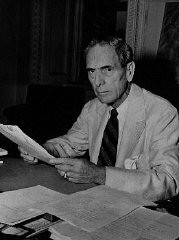
Brenda Senders in Rovno, 1944. Brenda joined a partisan unit that was constantly on the move. It occupied villages, conducted ambushes, shot passing German troops, blew up bases, and obliterated bridges and train tracks.
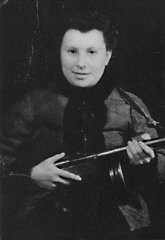
View of the brick factory in the Jasenovac concentration camp in Croatia. Jasenovac, Yugoslavia, between 1941 and 1944.

US Chief of Counsel Brigadier General Telford Taylor during the Doctors Trial. Nuremberg, Germany, December 9, 1946-August 20, 1947.
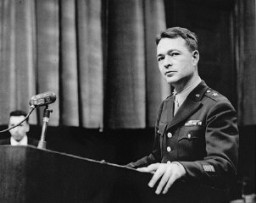
General Bernard L. Montgomery, commander of British forces in Egypt, watches British tanks move toward German lines during the military campaign in North Africa. November 1942.

British military personnel (upper deck) aboard the Exodus 1947 refugee ship, whose Jewish passengers were then forcibly returned to Europe. Haifa, Palestine, July 1947.
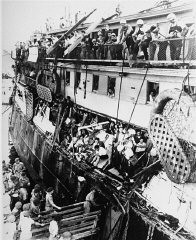
Portrait of British Prime Minister Neville Chamberlain. London, England, 1937–1940.
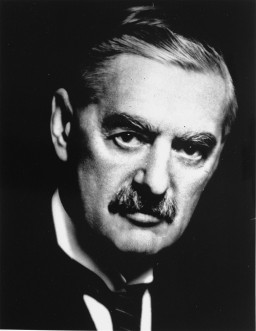
British Prime Minister Neville Chamberlain and German Chancellor Adolf Hitler greet each other at the Munich conference. Munich, Germany, September 29–30, 1938.
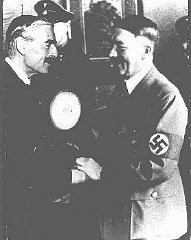
British Prime Minister Winston Churchill sits in the Cabinet Room at 10 Downing Street. London, 1940. IWM (MH 26392)
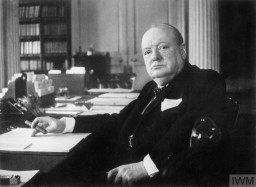
British Prime Minister Winston Churchill (far right) and others view buildings damaged during the Blitz. The Blitz was a German bombing campaign over Britain that lasted from September 7, 1940, to May 11, 1941. London, September 8, 1940. IWM(H 3978)
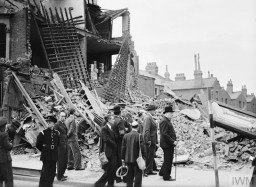
Portrait of Lieutenant Colonel Mervyn Griffith-Jones, British prosecutor at the IMT Nuremberg commission hearings investigating indicted Nazi organizations.
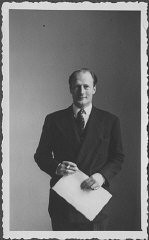
A British recruitment poster encourages Jews in Palestine to enlist in the Jewish Brigade Group. Palestine, January 1945. The Jewish Brigade Group of the British army, which fought under the Zionist flag, was formally established in September 1944. It included more than 5,000 Jewish volunteers from Palestine organized into three infantry battalions and several supporting units.
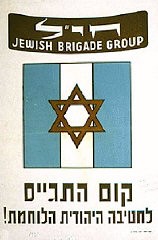
Jewish children, forcibly removed by British soldiers from the ship Exodus 1947, stand behind a barbed-wire fence. Photograph taken by Henry Ries. Poppendorf displaced persons camp, Germany, September 1947.
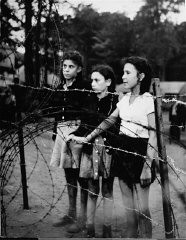
British troops in a trench cover the bodies of two fellow soldiers killed during the Battle of the Somme, November 1916. © IWM (Q 4393)
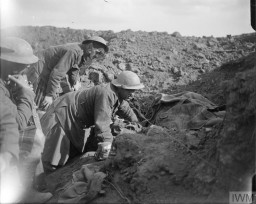
British soldiers remove Jews, passengers of the Exodus 1947 who were forcibly returned from Palestine, upon their arrival in Hamburg. Germany, September 8, 1947.
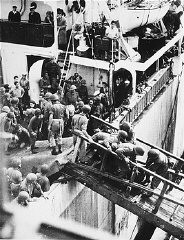
In April 1947, the British Navy intercepted the ship Theodor Herzl en route from Europe to British-controlled Mandatory Palestine. On board were hundreds of Holocaust survivors, including children, seeking a home. This photograph shows British soldiers transferring some of the Jewish refugee children to a vessel for deportation to Cyprus detention camps. Haifa port, British-controlled Mandatory Palestine, April 1947.
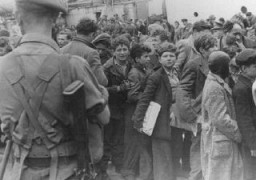
British troops land on the beaches of Normandy on D-Day, the beginning of the Allied invasion of France to establish a second front against German forces in Europe. Normandy, France, June 6, 1944.
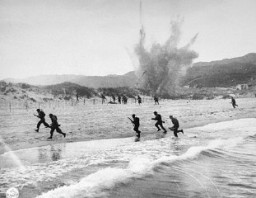
British troops land on the beaches of Normandy on D-Day, the beginning of the Allied invasion of France to establish a second front against German forces in Europe. Normandy, France, June 6, 1944.
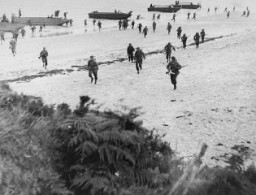
Captain Lasdun briefs troops of the British Army on June 4, 1944, two days before the Allied invasion of Normandy on D-Day.
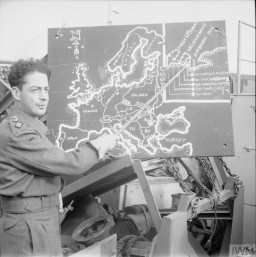
American soldiers and liberated prisoners at the main entrance of the Buchenwald concentration camp. Germany, May 1945.
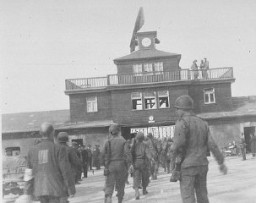
Returning from work in a stone quarry, forced laborers carry stones more than six miles to the Buchenwald concentration camp. Germany, date uncertain.
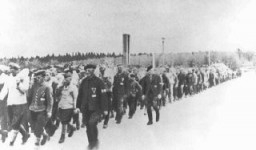
This building in the town of Elverum, near Oslo, was damaged during a bombing raid following the German invasion of Norway. Elverum, Norway, May 3, 1940.
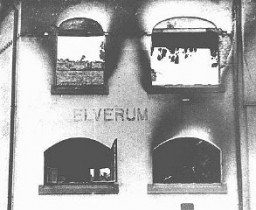
Postcard of a pension (a small hotel) in Le Chambon which served as a refugee home for children sheltered from the Nazis. Le Chambon-sur-Lignon, France, date uncertain.

The exterior of a building in the Bergen-Belsen displaced persons camp in Germany. Photograph taken in 1945.
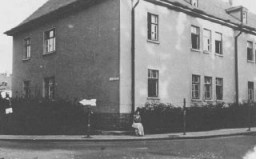
Construction of Oskar Schindler's armaments factory in Bruennlitz. Czechoslovakia, October 1944.

We would like to thank Crown Family Philanthropies, Abe and Ida Cooper Foundation, the Claims Conference, EVZ, and BMF for supporting the ongoing work to create content and resources for the Holocaust Encyclopedia. View the list of donor acknowledgement.